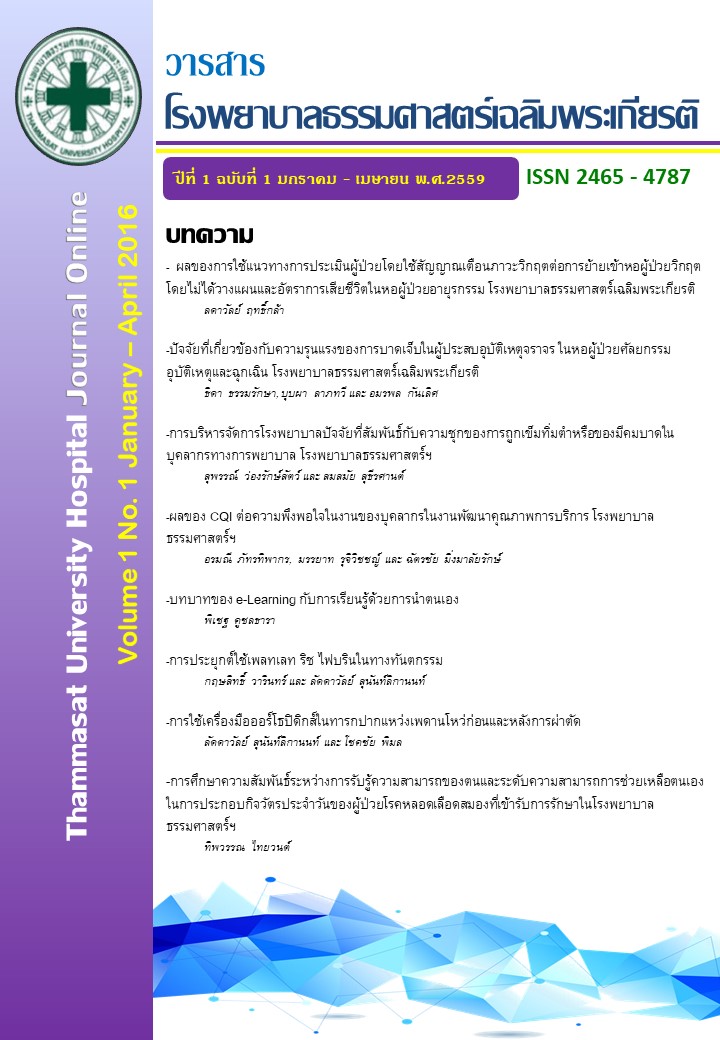Role of e-Learning with Self-directed learning
Keywords:
e-Learning, self-directed learningAbstract
This article will show that the past, present and future development of learning and teaching by bringing technology into the educational applications. e-Learning and self-directed learning meaning. Development of the CAI to e-Learning. The nature and composition of e-learning. Theories about adult learning and Self-directed learning model. By leading to the development model in e-Learning that took part in self-directed learning. Bringing information to improve instruction media. To increase educational opportunities. To search for information, access to the knowledge base. Information from various sources ex. news, business news, entertainment including education. Lead the way lifelong learning and self-directed learning.
References
ขรรค์ชัย คงเสน่ห์. (2547). การศึกษารูปแบบของ E-learning ที่เหมาะสมกับการศึกษานอก
โรงเรียน. กรุงเทพฯ. ศูนย์เทคโนโลยีทางการศึกษา.
ชัยฤทธิ์ โพธิสุวรรณ.(2544). การศึกษาผู้ใหญ่ : ปรัชญาตะวันตกและการปฏิบัติ. กรุงเทพฯ.
สำนักพิมพ์มหาวิทยาลัยเกษตรศาสตร์.
ที่ประชุมคณะรัฐมนตรี นายอภิสิทธิ์ เวชชาชีวะ (นายกรัฐมนตรี). แผนการศึกษาแห่งชาติ ฉบับ
ปรับปรุง (พ.ศ. 2552 - 2559). วันที่ 5 มกราคม 2553.
สุวัฒน์ วัฒนวงศ์. (2544). จิตวิทยาเพื่อการฝึกอบรมผู้ใหญ่. กรุงเทพฯ.
บริษัท เอ็กซเปอร์เน็ท จำกัด
Malcolm S.Knowles. (1975). Self-Directed Learning. USA.Prentice Hall Regents.Neil Selwyn, Marc J.Rosenberg.(2001). e-Learning : Stratrgies for delivering knowledge in the digital age.
USA. McGraw-Hill.
Otto Peters. (2001). Learning and Teaching in Distance Education. Virginia USA. Stylus Publishing Inc.


